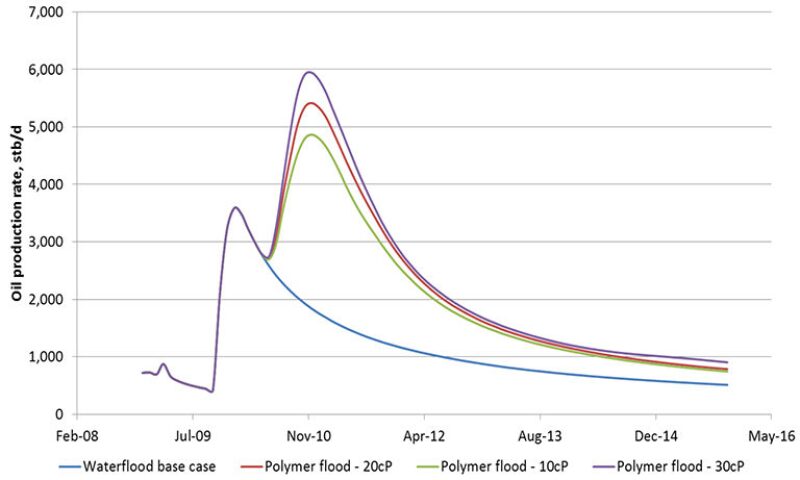This paper discusses an enhanced-oil-recovery (EOR) polymer-flood pilot at the Captain field in the UK North Sea during 2011–2013. The polymer flooding accelerated 6 years of potential waterflood recovery to 1 year and minimized potential water injection and handling by 25.2 million STB. A polymer incremental recovery of 16% original oil in place and improved sweep of 4.7 million STB demonstrated the advantage of using polymer EOR for viscous oils. Finally, the pilot data provided sufficient information to deliver a reliable subsurface assessment for the full-field project. These data also provide evidence that chemical-flood pilots not only can be economical but also can compete economically with waterflooding in some challenging locations when designed and operated efficiently.
Introduction
The Southern Upper Captain Sandstone (SUCS) reservoir is a complex channel infill of a localized canyon eroding the underlying Mid Captain Shale (MCS) and Lower Captain Sandstone (LCS). The canyon was created when two megaslump scars merged into a linear valley cut, giving the reservoir its characteristic shape. The slump scar process also triggered deposition of debrites (a mixture of MCS and LCS sediments) of poor reservoir quality, isolating the underlying LCS from the subsequent SUCS canyon fill.
Fluids from the Captain field are unlike those normally encountered in black-oil reservoirs.


